An old car will occasionally present perspective buyers with a mystery. Take for example this 1942 Mercury convertible, currently for sale on eBay in Stillwater, New Jersey. While this rough but mostly complete convertible looks to be ready for restoration, there is a problem. The body and drivetrain of this rare Mercury are described as being from a 1947 Mercury! What is going on here? With a buy it now price of $11,000, is this ragtop’s confused lineage holding back bids? Let’s take a closer look.
As most of you know, the Japanese bombing of Pearl Harbor on December 7, 1941 represented our forced date of entry into World War II. In the following months, it was clear that all of America’s industrial might would be needed if we were to win the war. Most important of these industries was the automotive industry. Both manufacturers and suppliers soon found themselves tooling up to make all manner of products needed to wage war. Vehicle production would have to wait for the war to end.
Ford’s assembly lines stopped producing automobiles on February 10, 1942. Even before then, changes had to be made. Some of the last cars built lacked chrome plating on various parts and pieces due to the scarcity of chromium desperately needed for the war effort. As you can imagine, the large amount of chrome on Mercurys of this model year presented a problem for Ford. All told, just 969 Mercury convertibles were constructed in that abbreviated year. While the body design would end up being produced with few changes after hostilities ceased, there are a handful of differences between cars produced in 1942 and those made in 1946. In fact, changes were few and far between all the way through the closeout of this body style in 1948.
The continuation of this body style is where this Mercury’s mystery begins. The few differences between the prewar and postwar cars were mainly confined to trim work and some interior parts and pieces. That does not take into account that numerous parts would have year specific date codes that a restorer would want for a proper restoration. Yet a proper restoration might be difficult on this car, as the seller claims that the body and drivetrain are from a 1947 Mercury convertible. This article from Old Cars Weekly gives a detailed description of another 1942 Mercury convertible, and provides a number of pictures to demonstrate what a perfectly restored example looks like. Pictures of a 1947 Mercury convertible for comparison can be found in this ad at Hemmings Motor News.
So, what happened here? We can only speculate, because the seller hasn’t given us any information to go on. I just wonder what number was used to determine the car’s 1942 registration. There should be a serial number stamped on the left frame rail forward of the cowl and the same number was also stamped on the top of the bell housing. If the seller would take the front floor out, that number could be seen as well. Given that the owner seems to be quite knowledgeable on early Fords in comparison to most eBay sellers, then I would hope that the serial number on the car’s paperwork is based on the frame number. Pictures of the two previously mentioned serial numbers would help a lot in providing proof of the car’s identity.
Or, if a new title was issued, a hapless DMV clerk could have registered the car’s body number as the serial number. The body number should be on a small plate riveted to the cowl. These can be purchased and engraved with any number you would like. If it is the original plate, then we could likely look that number up to determine a rough build date for the body. Assuming the seller has done all of this to make their claim, then what are the possible scenarios that might give us a mismatched frame and body? Perhaps a roll over accident and a junkyard body switcheroo? A left over 1941 frame that somehow survived the war to get used after the war? An executive’s car that got a body switch on the sly courtesy of Old Henry? Anyone else got any ideas?
Regardless, this car might be a steal at $11,000. Fully restored, these Mercurys are undeniably beautiful cars. The styling is a bit heavy, but overall these are well built cars with proven components. This one, while suffering from a fair amount of surface rust and dents in the front grillwork, seems to have a solid body. If it were stored outdoors, it would have to have been in a very dry climate. The interior looks neglected but not water logged. Much of the paint is still on the car as well. If all of the parts and pieces for the front end are present somewhere outside of the pictures, including the irreplaceable front bumper, then the restoration probably wouldn’t be that difficult compared to some of the vintage Fords we have seen on the site as of late. We are told that numerous spare parts go with the car. There are also a few rough 1942 Mercury coupes floating around craigslist at present. Using one of these as a parts car to replace any absent 1942 specific parts might not be a bad idea if you wanted to clear the lineage of the car up.
Yet it is that currently confused lineage that is probably scaring off buyers. Bodies that don’t match frames make buyers think a car might end up being a stolen car. We have seen enough of these stories as click bait on news sites to give us all the shakes at the mere thought. However, if this were a stolen car, the guy who owned it at the time of the theft probably isn’t with us today. If the car has a legitimate title in a hard case state like New Jersey, then you could probably rest assured the Jalopnik crew isn’t going to be writing a story about the New Jersey State Police doing a midnight raid on your house. Probably.
In fact, if you could overlook the mismatch, then this car has potential to be a stunner. Few people walking the Earth even know that there are subtle differences between the two model years, and even fewer could point them out. If you restored the car to drive and enjoy, then who cares?
Would the mismatched lineage bother you? Let us know your thoughts in the comments.






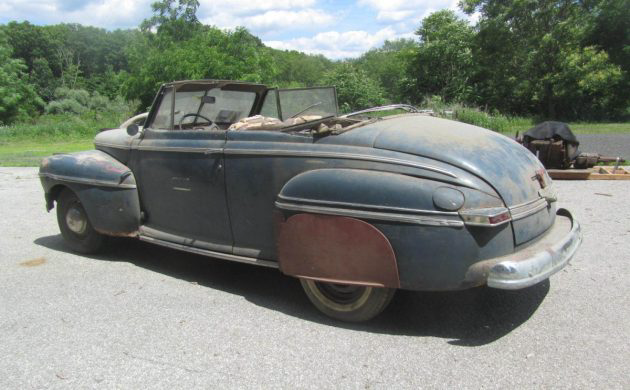
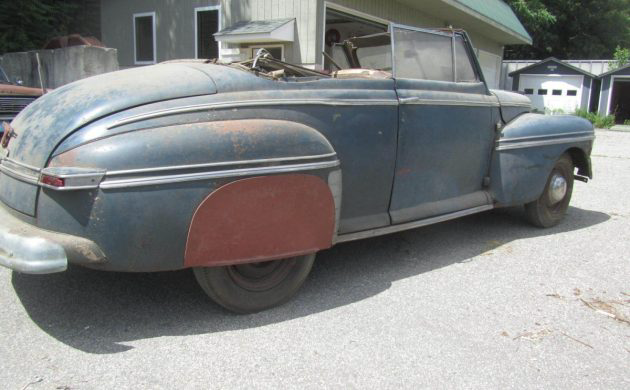
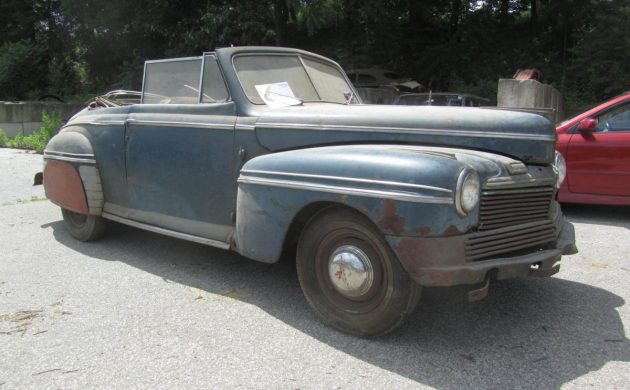

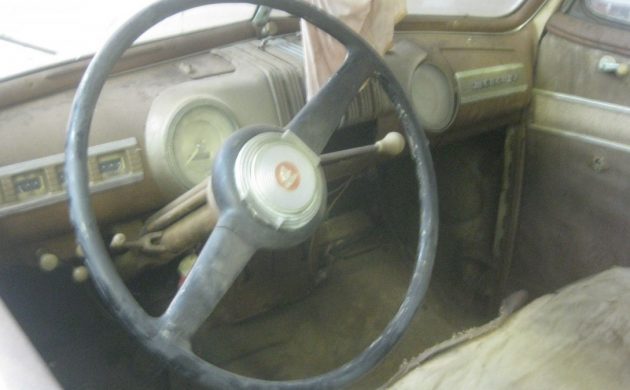

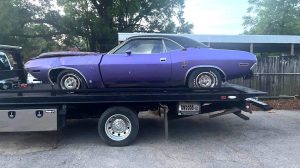





Quite the mystery clearly this car has been assembled without anyone touching it for a long time. Bright work and grille all point to a 42 paint matches up and looks old and undisturbed. If this car is a blend of the two years it happened a long time ago and in my opinion these parts have made up a car for many years and should stay together even through a restoration. The mystery is its story and will not likely ever be solved as to how this car came to be. I’d simply restore it and enjoy it. I like it better if it were a coupe I don’t really desire to own a convertible.
1942….it got a later/new engine….not rocket science….price close for a rare car…only three years from their beginning.
My first car was 1939 Ford convertible sedan, it had a ’49 Merc flathead and the title carried the engine number from the Mercury!
Trying to imagine it… all imports have been stopped and all domestic production halted for the duration… tomorrow… September 24, 2018. The freakout and sniveling would be epic.
I’m guessing that it’s probably a ’42 Merc with a later engine installed as part of Ford’s engine-exchange programme. It was Ford’s way of getting cars back on the road after WWII, so a lot of pre-war Fords, Mercurys and Lincolns got different engines from what was originally installed.
I think my folk’s ’40 Ford Deluxe tudor had a reconditioned engine dropped into it via this deal. They drove it from the Bronx to Mexico City and back in ’46.
I think its a 42. Engine is 24 stud witch looks original. 46 engines were 46AB with that I D cast on the heads. Ford did not have engine numbers as Henry felt they would be replaced. Stamped vin on transmissions.
Perhaps my magnifier is better, but the cyl head does have 59AB cast in the center which would be appropriate for ’46-8.
I’ve got engines with 59A cast into the heads and 69A cast into others. The 59AB actually came out in ’45 and remained untouched until ’48. Even though my ’47 pickup is designated as a 79C, the heads say 69A.
@Beatnik Bedouin: I’ve also heard and read about this program. Dad told me that after the war, FoMoCo did indeed
offer a psrts exchange program in place
to help people get their cars running
again while the company geared up
for the ’46 model year. At the time, it
seemed like the logical thing to do.
At that point in time, a flathead engine
was so universal that it didn’t really
matter what year parts you put on it,
or in it, the engine would still run as
intended. The only ones I knew of
that were whining and boo hooing
about it were members of the V-8
Club Of America, who disqualified
each other’s cars over the fact you
might have a ’48 coil on a ’39 engine.
Just who the hell cares anyway? At
least your car could be driven by the
judge’s table anyway. It’s picky fools
like that that turned me towards resto
roddimg instead of restoring a car.
This car may well have built through
the exchange program and it sounds
to me that it was. Now that we have that
settled, someone please buy this car
and restore it.
The styling a bit heavy?! To each his/her own because I think this would be a jaw dropping beauty once it’s spruced up,but that’s my opinion.I would love to own this baby if I was able.
Definitely a postwar distributor on this one. Not a bad thing either as this was one of the best distributors that Ford ever used.
The grille looks like something made of rebar :) or sold through JC Whitney as a “tubular custom” add on. I know in 42 Lincolns and Mercurys used simplified designs here with less-than-ideal chrome plating process if at all. This looks like one of them. Best of luck to the new owner in restoring this puppy!
I had a ’42 Merc 2 door in 1959. I don’t know how many different distributors that year might have had, but mine was round and flatish and was called an octopus style. It had 4 plug wire sockets on each side.